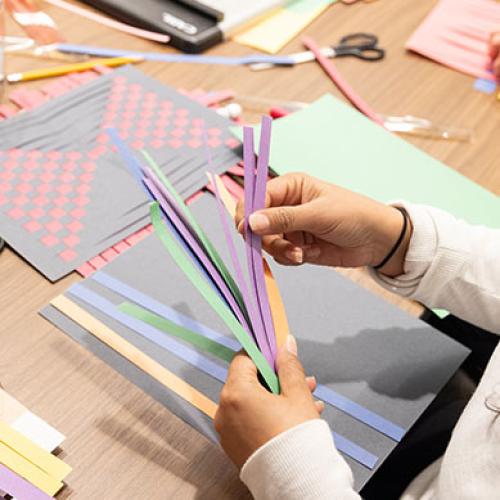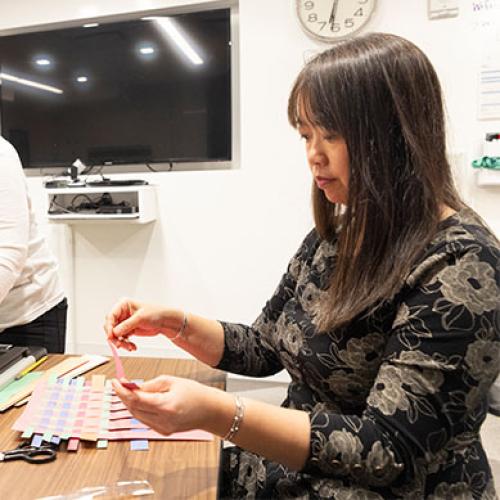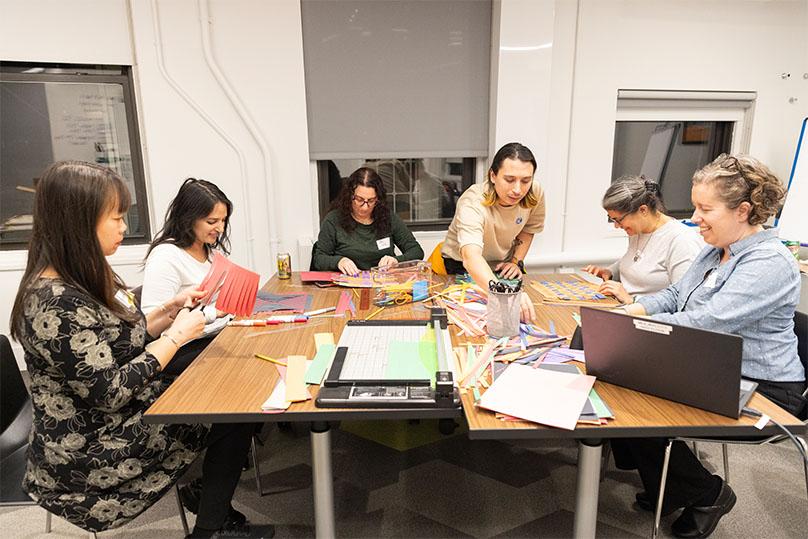
Weaving is a fun visual way to engage diverse student populations in a variety of mathematical concepts.
It has been described as particularly mathematical, and often used by teachers to experiment with how students learn geometry and patterns or develop skills like modeling and problem-solving.
After participating in a crafting and mindfulness-focused MƒA workshop, MƒA Master Teachers Grace Chang and Jessica Smith were encouraged and inspired to propose their own course that connected crafting to STEM and pedagogy. And so the MƒA mini-course, "Weaving a Pathway to Mathematical Engagement,” was born.
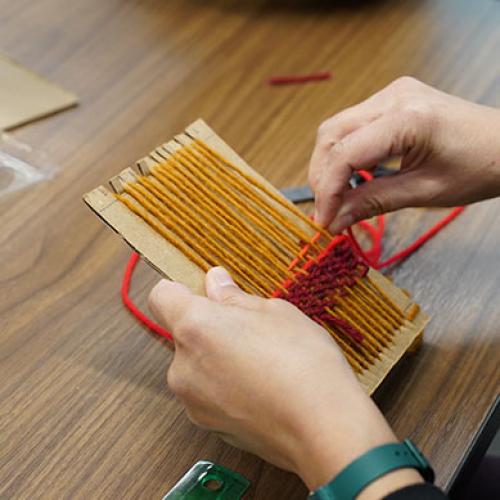
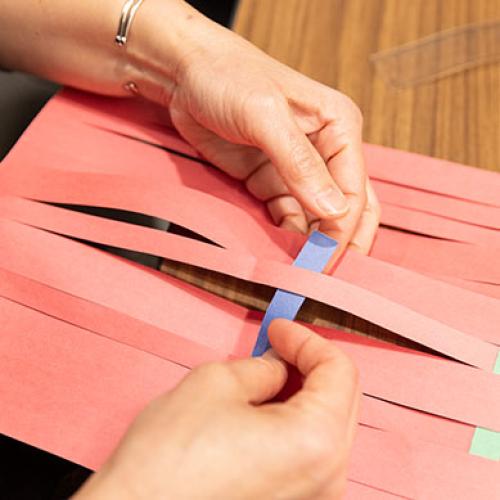
MƒA teachers spent four weeks building a collection of images and stories of weaving from their own lives, constructing cardboard and canvas looms and weaving paper and small, simple textiles. At first, teachers looked at examples of weaving and shared observations about numbers, colors, shapes, and patterns, learning basic weaving vocabulary as they worked.
“There is a lot of work with patterns in weaving,” said Chang. “One can use simple counting, repeated addition, multiples, and division to decide how many warps (vertical strands) to put into their loom for a particular design, or to decide how to group the strands for a pattern.” She added, “You can also learn a lot about a person’s spatial awareness-- how they look at a pattern and figure out a way to recreate it.”
They soon examined computational fluency, multiplication, and division and incorporated recycled materials, texture, and sustainability into their weaving. Finally, they analyzed tessellation and pattern making through paper weaving and graph paper connections.

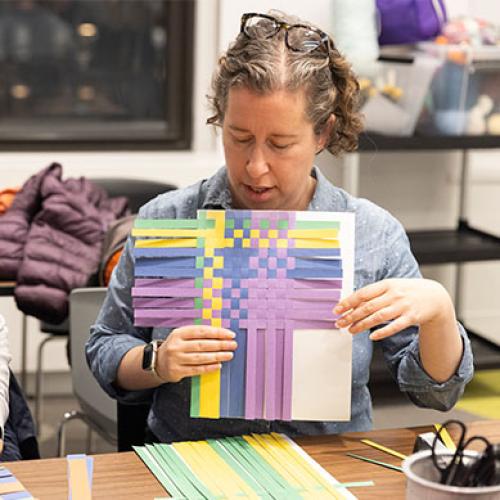
“Every participant was so open and enthusiastic, and the course really proved how weaving is for everyone,” said Jessica. “We had some teachers with almost no experience and one teacher who had their own weaving studio!”
In addition to the connections between weaving and common math routines or even weaving and coding, both Grace and Jessica were quick to point out the links between weaving and indigenous cultural practices. They added, “Teachers should read stories about weaving and weavers to learn how mathematics runs deep in all cultures, including Woven of the World by Katey Howes and Dinara Mirtalipova, Abuela's Weave by Omar S. Castaneda, or Rainbow Weaver by Linda Elovitz Marshall."
